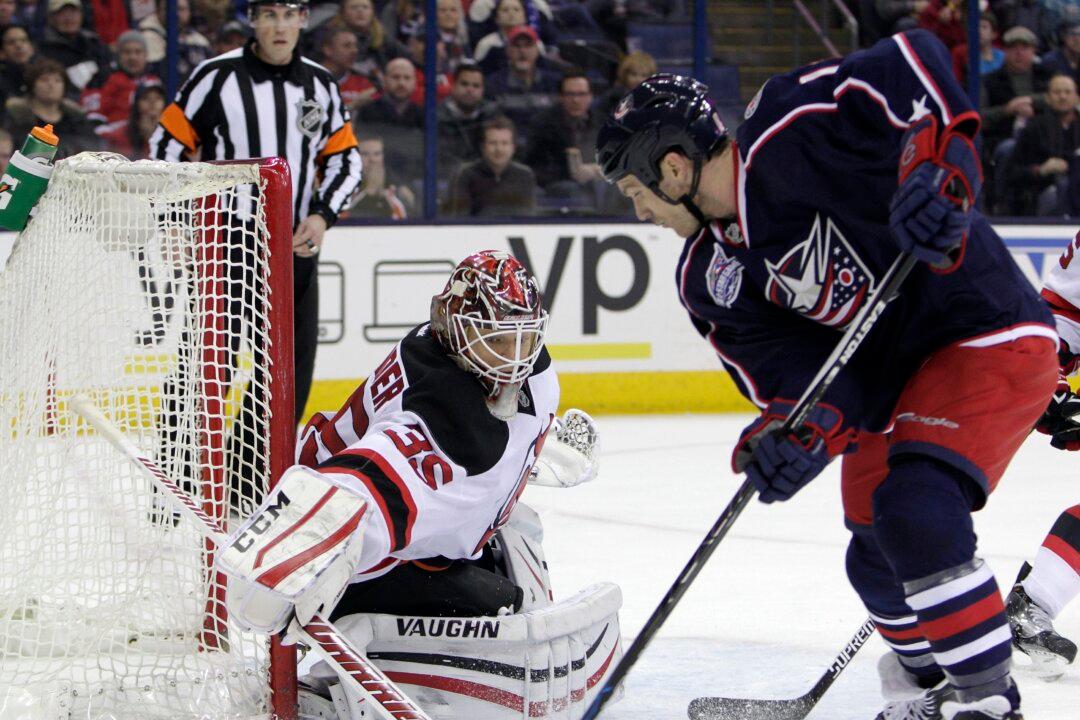After having clinched a spot in the NHL playoffs for the first time in nine years, the Toronto Maple Leafs played golf in April.
After beating their archrival Ottawa last Saturday, TSN reported the team flew immediately to Florida. The Leafs actually had three days off before their next game.
Rather than fly back to Toronto, which, like the engine of a used vintage car, is roaring back to life, they traveled to the Sunshine State to prepare for their mid-week road trip.
The Leafs golfing in April? Not surprising. Using golf to relax before a playoff run? A surreal proposition.
And while the organization attempts to focus on the present task of preparing for something they haven’t experienced in nearly a decade, Leaf fans and critics reflect on a season of unparalleled good fortune and wonder how it all happened in a whirlwind, lockout-shortened season.
On the subject of lockouts, this will be the first Toronto team to reach the postseason under the salary cap that was established during the previous lockout of 2004–05. Gone are the days when playoff success could be bought by offering long-term money.
The Leafs are without a key free agent acquisition this season and have largely developed their roster through thrifty trading and patient drafting strategies. Previous Toronto teams, like the ones that boasted Mats Sundin, paid large sums to add Gary Roberts, Alexander Mogilny, and Curtis Joseph.
Those players would not have come had it not been for the contract security and romantic allure of a then attractive organization. When former general manager Brian Burke was unable to sign Daniel and Henrik Sedin or Brad Richards in previous free agent periods, this signaled a fundamental change in the way the Maple Leafs built hockey teams.
With their team’s reputation in decline, management relied heavily on trades to construct the core of this roster. Captain Dion Phaneuf, reclamation project Joffrey Lupul, and controversial figure Phil Kessel were all plucked from other teams and not one of them is over 30 years old. Toronto has the third youngest team in the NHL, according to QuantHockey.com
With youth come areas for improvement and the Leafs have certainly had their share this year. CBC’s Hockey Night In Canada reported Toronto has the worst shot differential of any playoff team in the last 11 years. That means that they have been out-shot more than any other team to reach the postseason in the last 11 years.
Does this suggest they are a very lucky team? How have they achieved so much success and how can one predict that they can sustain this type of performance and hope to advance?
It has been some of the youngest and most inexperienced players who have exceeded expectations and driven this team to the place it is now. Nazem Kadri, as recently as January of this year, was viewed with extreme skepticism by fans and media and remained an asset of unknown potential.
Goaltender James Reimer’s position on the team was questioned as recently as early April when it was rumoured that the Leafs were serious bidders in the goaltending market at the trade deadline—and has since played his best hockey to date.
Both players have had significant statistical turnarounds and have risen to the forefront of this team. Both are Maple Leaf draft choices that have been given plenty of time to develop.
The term “found money” has been tossed around generously by close observers when attempting to sum up this year’s roster. Bruce Arthur of the National Post in January referred to defenceman Mike Kostka as such. Sean Fitz-Gerald of the same publication used the term to describe Lupul’s return to the lineup in March after injury.
The Leafs’ quick turnaround from the dismal performance of last season may feel like an unexpected bonus, but is perhaps instead a product of a degree of patience from management and a sign of faith in its players. The success of Kadri and Reimer seem to be the direct result of this new developmental approach.
Is current GM Dave Nonis interested in longevity of success? Or will the new ownership group, the Bell and Rogers conglomerate, become intoxicated with playoff revenues and insist that, once again, the Leafs act as a win-now organization?
These and other questions surround this current incarnation of Maple Leafs as it remains difficult to pinpoint how a team so young, so inexperienced, and in such flux could end a nine-year playoff drought.
Perhaps they are too green to be affected by the weight of expectations: “For most of the players here, we don’t carry the burden of nine years [without playoffs],” Reimer told TSN on April 21.
It is very likely that the players, despite saying so in media interviews, do not grasp the significance of this achievement the way Toronto fans do.
To see their team become relevant in a salary-capped NHL and for the team to have done so using a ground-up approach, unheard-of in Toronto’s past, is more than a thrill. It means putting the golf clubs away for at least a few more weeks.
Joe Pack has written for TheHockeyWriters.com, is a member of the Society for International Hockey Research and has his own blog at www.upperbodyinquiry.com. Follow him on Twitter @JoePack
The Epoch Times publishes in 35 countries and in 21 languages. Subscribe to our e-newsletter.



